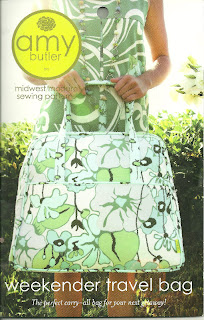This bag was just short of being a disaster, but I'm putting it here, anyway, in recognition of all these projects that are springboards to better ones. I did learn something from it, and with luck the next bag will incorporate that learning.
I never used the old bag: in addition to not fitting the Gaspar pineapple well, the metal teeth of the zipper drag across the wood whenever the uke goes in or out of the opening. Who thought this would be a good idea? So the starting point for this bag was a long zipper with nylon teeth. I used this Make-A-Zipper roll (no affiliate connection), which I'd originally bought for the Weekender.
The Weekender had also given me some experience using heavy-duty stabilizer and sewing on cording, both of which I adapted to this bag. I didn't take any photos, but the sequence was more-or-less as follows:
- Traced around the ukulele on butcher paper to make a pattern. At this point, I had a choice of shaping the bag exactly like the pineapple uke or in a more oblong shape which would take out some of the curves. I chose the former—which may have been my first mistake, as it was much harder to sew.
- Used the pattern to cut pieces for the top and bottom: one each of outer fabric, heavy duty stabilizer (the same Peltex #70 used in the Weekender), iron-on interfacing to hold the Peltex to the fabric (ditto), 1/2" foam and lining fabric. Stabilizer and foam were cut to the exact size of the pattern. The other pieces were cut larger, for seam allowance and trimming.
- Added a zippered pocket to the top piece.
- Stitched layers of top and bottom pieces together. The foam was glued in place underneath the lining fabric using 3M Super 77 spray adhesive.
- Made and added cording around the edges of the ukulele outline.
- Cut a length of zipper, added 2 pulls facing each other, and stitched one side of this zipper around the top edge.
- Layered the perimeter piece as in Step 4, and added handle & rings for a shoulder strap.
- Sewed the other side of the zipper to this perimeter piece.
- Put flexible plastic in between layers of the perimeter and stitched it to the bottom.
- Covered all raw edges in bias tape.
It sounds so straightforward, doesn't it? But in fact, I'm sure I redid nearly all the seams at least once. I was figuring the construction out as I went, stitching and restitching, trying to anticipate what the next step might be. It was a haphazard, messy process.
Halfway through, I felt like the stabilizer wasn't working well with the narrow neck shape, so cut up a sheet of flexible plastic to insert into the top and perimeter pieces.
Once I'd sewn the last seam and turned it right side out, I was dismayed to see how twisted the neck area looked. I ripped it out and restitched it several times before deciding that it was going to have to do. The neck is still twisted, sigh. I think it's probably due to my top and bottom pieces being entirely different shapes—and that is due to the fact that I didn't have a seam line at all, but was trying to sew to the shape of the stabilizer/foam outlines.
 |
| the awful twist |
What would I do differently next time?
For starters, I would measure and mark much more than I did this one. I was afraid of miscalculating but in the end, probably erred worse in trying to sew by feel instead of having a precise line to follow. Each mismatched fit ended up compounding problems down the road.
And as mentioned in Step 1, a simplified shape would save a lot of headache.
The zippered pocket needs to be moved down several inches. It's really only useful for holding a set of spare strings, so a larger zipper opening would make it easier to slip them in or out.
Next time I'll buy cording instead of making it. I may skip the stabilizer/interfacing combination, too. In the end, it just seemed like a headache to have to sew around. I didn't find this to be so with the trapezoidal shape of Weekender, but it was a bear trying to follow these tighter curves. I'd rather just stitch around the cording and insert a piece of plastic, as I ended up doing with this one, anyway.
Finally, the next bag will be sewn on an old Singer. I used the Pfaff because it was already set up from another project, but I don't like its zipper foot as much. The Singer zipper foot can sew right up close, whereas the Pfaff's doesn't seem as well designed to me, with a wider distance from the needle to the edge of the foot.
 |
| Singer zipper foot |
 |
| Pfaff zipper foot |
So that's the first attempt at an ukulele bag. It's funky—that's the nicest way I can put it—but at least it cost me nearly nothing, as all the fabric and hardware was in my stash or recycled from other pieces. I think the foam, plastic and bias tape cost a total of about $5. And now I can take the Gaspar to the Reno Uke Fest.
Still...I hope the next ukulele bag turns out better than this one. If you've made one of your own and/or have ideas on how this one could be improved, I would really love to hear from you.
























